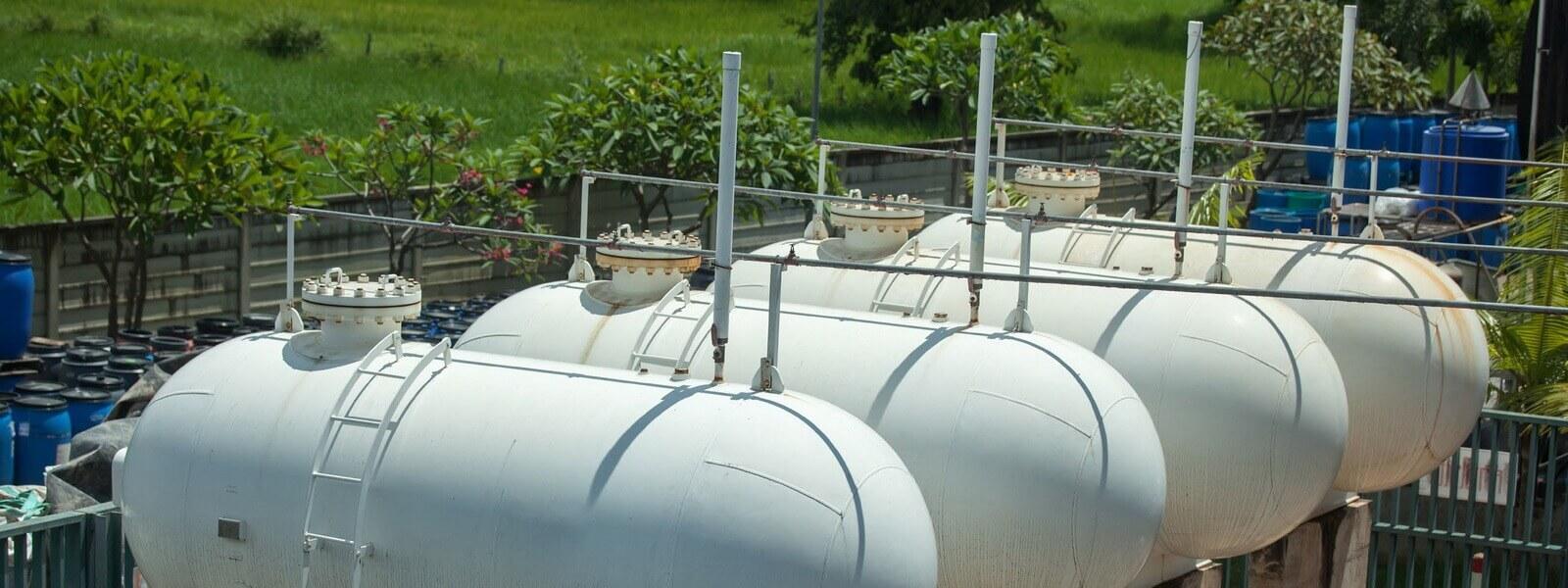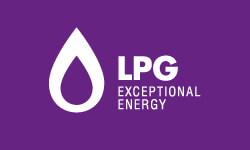
News from European LPG Stakeholders2024-05-02
Liquid Gas Europe co-signed the Turin joint statement on sustainable biofuels on 29 April
LPG is an immediately available low carbon alternative. Indeed, it emits 35% less CO2 than coal and 12% less than oil. It also emits almost no black carbon, arguably the second biggest contributor to global warming.

LPG offers significant environmental advantages, particularly in terms of indoors and outdoor air quality. It is characterized by low particle emissions, low NOx (nitrogen oxide) emissions and low sulphur content.

LPG has low particle emissions, low NOx emissions, and low sulphur content meaning that it does not pollute the air as much as many other energy sources. LPG can therefore contribute significantly to both indoor and outdoor air quality.

LPG is available right now in quantities that can service the energy needs of millions of citizens across Europe and the world. Looking forward LPG will remain in abundance globally for the forseeable future. LPG a an energy source which society can depend on for many years to come.

Due to the its dual origins and the fact that it’s easily transportable, LPG offers a secure alternative to other energy sources which are part of a grid system. If one source of LPG is unavailable, then it is always possible to supply it from another one. Not only is LPG produced in Europe in large quantities, when it is imported, it arrives from the north, south, east and west.

LPG is a low carbon alternative to conventional fossil fuels. Its combustion emits 33% less carbon-dixoide than coal and 15% less than heating oil. LPG also emits almost no black carbon, which scientists now believe is the second biggest contributor to climate change globally and is perhaps the single biggest cause of arctic warming.

Gaseous fuels such as LPG offer inherently high efficiency, an advantage that has been greatly enhanced by the emergence of performance-optimising technology such as condensing boilers and renewable/LPG hybrid systems. In view of the environmental, economic, and strategic benefits associated with a reduction of energy demand, a switch to LPG from other, less efficient alternatives is a smart move for individual end-users and European society as a whole.
LPG can be used in several different sectors, such as domestic, commercial, industrial, agricultural and for transportation. Wherever heat, light or power is required, LPG can offer its benefits to both end-users and society as a whole.

LPG is often the ideal solution for heating buildings - clean, sustainable and available everywhere.
When building a new home of refurbishing a heating system, the choice of heating source is an important decision and should be based on objective analysis of the end-user's needs an preferences. Millions of homes across Europe currently use LPG as their heating source as in areas beyond the gas grid, it represents a clean, efficient, and modern alternative.
The relative advantages of LPG can make it a highly attractive heating solution. LPG can meet a household’s energy needs, all while enhancing indoor air quality and contributing to the protection of human health. Generating significantly lower levels of particulate matter, as well as sulphur and NOx emissions, LPG helps keep homes cleaner and safer for their occupants.
Additionally, LPG boilers have the added advantage of emitting almost no particulate matter into the air. This constitutes a significant benefit for citizens, policy-makers and society in general in terms of protection of public health. Recent scientific evidence also demonstrates that some types of particulate matter, especially black carbon - more commonly know as soot - have been found to cause global warming and as a clean gaseous fuel, LPG emits almost no black carbon thus reducing its impact on the climate.
Automotive LPG, Europe's leading alternative fuel, offers a clean and lower carbon alternative for Europe's roads.
Automotive LPG, also known as Autogas, is Europe's most widely used alternative fuel. With over 15,000,000 vehicles already running on Autogas, serviced by a filling station network of over 46,000 sites, Autogas offers Europe's drivers an alternative to conventional fuels. Furthermore, its particular characteristics, both as a fuel and an industry, make it ideally suited to the contemporary energy and environmental paradigm in which Europe faces the challenge of balancing the diverse imperatives of security, sustainability, competitiveness.
As an environmentally friendly and economical fuel, Autogas can help keep Europe's citizens moving while minimizing the impact of transport on human health and the environment. These attributes make it an obvious alternative as part of a diverse and sustainable energy mix.
Transforming this potential into reality can only be achieved through an immediate an concerted commitment on the part of not only the Autogas industry, but also policy-makers at European, national and local level. With little need for investment in infrastructure, this is a process which can and should start right now. Click here for more information about our positions on sustainable mobility.
LPG is a great cooking fuel for those who live beyond the grid.
We all know the advantages of cooking with gas; the ability to accurately and immediately regulate the flame, to see the strength of the heat coming from the cooker, and not having to rely on a flat coil, mean that gas is the cooking choice for professional and amateur chefs worldwide. However, natural gas generally requires a natural gas network, and where the network ends, LPG steps in as an equally versatile alternative.
With over 100 million Europeans living without access to the natural gas grid, and many more taking their holidays in rural or mountainous areas, LPG is often the only solution available to ensure that citizens on the highest mountains or smallest islands can enjoy the same benefits as those in urban areas.
Furthermore as a gaseous fuel, LPG is cleaner than most cooking alternatives available to off-grid areas, helping to reduce indoor and outdoor air pollution.
These associated health benefits are of particular importance to people living in the developing world, who often use traditional cooking fuel sources such as dung or wood which are extremely harmful to human health, and as the latest research shows, can have a devastating effect on the snow cover of mountainous areas. Using LPG instead of these biomass based energies can help the local environment and reduce the impact of cooking on climate change.
LPG is an important energy source for many of Europe's industries.
LPG is used extensively in both industry and agriculture throughout Europe. With an almost limitless number of applications, LPG is one of Europe's most versatile energy sources.
LPG is widely used for many industrial applications such as space and process heating (including metal high temperature treatment), oxy-propane cutting, welding, powering machinery, producing food, water heating, de-frosting, shrink-wrapping, powering industrial ovens, kilns or furnaces, or powering fork-lift trucks in and outside warehouses. Characterized by highly controllable temperatures, negligible NOx, Sox and particulate matter emissions, and its associated benefits in terms of protecting human health, LPG is an efficient, effective and environmentally friendly energy source for industry.
Civil engineering is another domain in which LPG is widely used. Specific applications include heating bitumen, repairing and laying roads, illuminating road signs and floodlighting. Building contractors use LPG in industrial building driers and space heaters. Other uses include plumbing, roofing, welding, smelting, and brick manufacturing. Manufacturers of aerosol products require pure field-grade propane for propelling household products (cosmetics, air fresheners, insecticides, etc)
With its particular series of advantages, LPG plays an important role in European industry. The applications really are limitless.
Farmers across Europe rely on LPG to keep them growing. No other fuel can offer a comparable combination of portability, accessibility and convenience of use.
As a clean fuel, LPG allows farmers to meet the challenge of staying competitive in the modern agricultural environment, all while respecting the value of nature and maintaining a commitment to sustainable development.
Whether used for livestock-rearing and crop-drying applications or simply for fuelling agricultural machinery, LPG is an essential tool for the contemporary European farmer.
Specific examples of LPG’s contribution on the farm include:
Pig & Chick Rearing
The precision control that LPG provides ensures that animals can be raised in the comfort they require to grow and stay healthy. Crucially, it also makes dangers such as power cuts and voltage reductions a thing of the past. Such advantages are of considerable importance, not only because they help protect animal welfare but because they save money, avoid waste enhancing a farm’s competitiveness.
Grain and fruit drying:
LPG facilitates safer and more effective drying of crops such as fruit and grain, allowing the farmer to preserve the quality of their crops and to meet specific market specifications for moisture content. It also enhances efficiency since 90% of the propane used is converted to energy, meaning less waste and lower costs.
Thermal desiccation:
As an effective substitute for the harmful chemicals sometimes used for weeding, LPG plays an important role in preserving the quality of soil and water sources. This is a further demonstration of LPG’s capacity to meet the needs of farmers.
Whatever the application, LPG is an immediately available alternative, ready to power clean, modern and efficient agriculture all across Europe.
LPG is a clean and immediately available energy source which can be used practically anywhere.
LPG (liquefied petroleum gases, covering both butane and propane) offers many advantages, both to end-users and to society as a whole.
With its dual origins - natural gas directly drawn from the earth, and crude oil refining - it already responds to the energy demands of more than 120 million EU citizens. The fact that it can be easily liquefied makes LPG a a highly versatile energy alternative and thanks to a wide variety of packaging and storage options, LPG has numerous fuelling applications: LPG can be used for:
- Space and water heating
- Cooking
- Lighting
- Power generation
- Industrial processing and heating
- Automotive fuelling
LPG is an immediately available low carbon alternative. Indeed, it emits 35% less CO2 than coal and 12% less than oil. It also emits almost no black carbon, arguably the second biggest contributor to global warming.
LPG offers significant environmental advantages, particularly in terms of indoors and outdoor air quality. It is characterized by low particle emissions, low NOx (nitrogen oxide) emissions and low sulphur content.

To learn more on the many application of LPG, please visit www.lpg-apps.org. This site aims to be the most comprehensive and authoritative database for LPG applications available online.